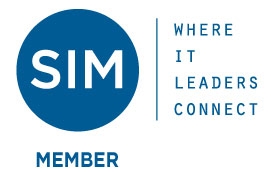 If people could pick people, there wouldn’t be a 50% divorce rate. Do we know why?
If people could pick people, there wouldn’t be a 50% divorce rate. Do we know why?
I read a post “Information Governance for the rest of us” by a contact of mine Andrew Sohn this morning. It gave me another perspective on the data we use to match people. Whether dating or hiring should we be considering the self examination to mitigate risk that Andrew posed?:
“Information Governance is the framework to allow an organization to answer these questions:
- What data do I have? What is it comprised of?
- Where is my data?
- Why do I need each set of data? Do I need the data at all?
- What is the classification of each set of data?
- Who is responsible for each set or category of data?
- Where do I go to get the desired data?
- How do I access the data in a timely and efficient manner?
- What is the quality and timeliness of the data?
- What is the risk associated with the retained data? Am I adequately managing that risk?
- How much is the data costing to store? To Manage?
- … and Are there effective controls, policies and procedures in place to ensure I can always answer all of these questions?”
Unfortunately, it is often hindsight where the risks and rewards were not weighted effectively and the consequences are being experienced, do we find clarity.
In the IT staffing world for the past 25 years, the litmus test to accept a search assignment is urgency – when the hiring authority can articulate the consequences of not adding the right talent; the missed business deliverables. Most often, the grocery list to go shopping for the hire is neither ranked in importance, characteristics not operationally defined, nor linked to the measureable business outcome.
The ‘data’ would say there is a skills gap, not enough qualified candidates to fill IT hiring demand. The reality I’d suggest is the inability to rank requirements to allow professional growth for an otherwise qualified candidate employed elsewhere. People are the most expensive asset of an organization but the data and process to attract and retain them is rarely managed effectively.
With the advent of social media there is a huge repository of data on people. It is amusing how we attempt to govern the candidate selection process heavily driven by ‘keywords’ matching a grocery list. Further, we believe everyone else in the interview process defines the ingredients in the same way as we do when there is a natural bias to weight those ingredients on how the hire will ‘taste’ to us personally. Ever notice how the recipe has all different types of quantities, measurements, and mixing instructions? Cookies might be able to be replicated from batch to batch but not even identical twins will become the same people.
Ever asked illegal questions such as marital status, children, home ownership, or other discriminating ‘data’ when it’s also unrelated to the ability to perform in the job you’re hiring for? Yesterday a senior IT candidate who happened to have a gender-neutral first name, related to me how a corporate recruiter responding to his resume ended the phone call. Apparently his deeper voice indicated he wasn’t a woman that the recruiter they were looking to fill the position.
Maybe you never had a class to show you how to hire, just like your gym class never showed you how to run for the best results – you just do it. I’d be happy to share a “Job Definition Session” to demonstrate how Information Governance in hiring will reduce your risk and attract the high powered passive candidates you seek.













Comments are closed.